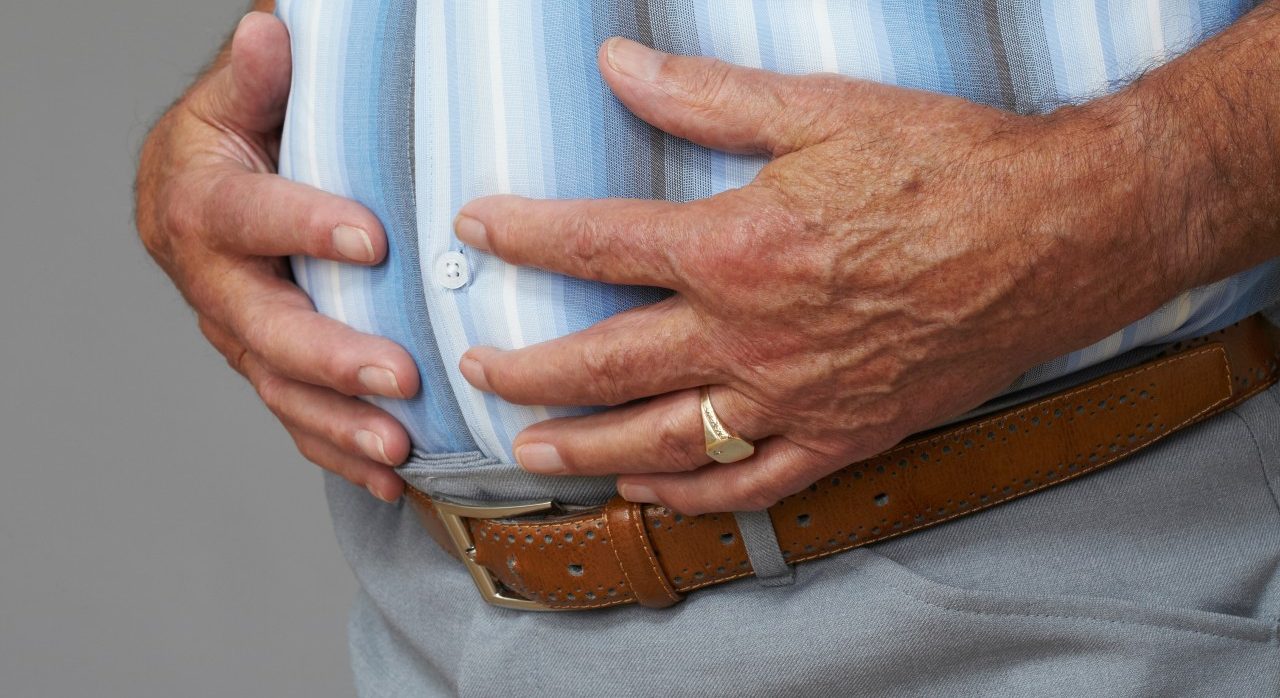Nonalcoholic Fatty Liver Disease and Obesity

It’s not only booze or hepatitis that injures your liver; being overweight and sedentary takes a toll, too. Know the connection between nonalcoholic fatty liver disease and obesity.
For millions of Americans, a yearly checkup can bring a surprise when lab tests show liver enzymes are high, indicating liver damage. If you don’t drink alcohol or take drugs and you feel fine, what could be the cause?
The odds are your doctor will explain you have nonalcoholic fatty liver disease, or NAFLD — especially if you are overweight. If that’s the case, you aren’t alone. According to the American Liver Foundation, about 25 percent of people in the U.S. have NAFLD, a condition associated with extra fat in liver cells.
The primary cause is being overweight or obese. And with obesity an epidemic in the U.S., it’s no surprise NAFLD now accounts for 75 percent of chronic liver disease in Americans and, increasingly, leads to eventual liver transplants, according to a report by University of Arizona researchers.
While nonalcoholic fatty liver disease often doesn’t cause any symptoms or result in serious health problems, that doesn’t mean you should ignore the condition. Studies also show NAFLD is linked to metabolic syndrome (a cluster of conditions including increased blood pressure, high blood sugar levels, excess body fat around the middle, and high cholesterol) and raises your risk of developing type 2 diabetes. NAFLD can progress to a more severe stage of liver disease called NASH (non-alcoholic steatohepatitis) and cirrhosis, too. It’s also associated, rarely, with liver cancer.
There are currently no specific medications for NAFLD, although your doctor may prescribe drugs to treat conditions associated with the condition, such as type 2 diabetes and high cholesterol, the American Liver Foundation points out. However, losing weight and getting in shape are prescriptions that can possibly prevent liver damage from starting or even reverse it in the early stages.
If you are diagnosed with nonalcoholic fatty liver disease, scientists have some good news. There’s now evidence that getting off the couch and doing some exercise — regardless of frequency or intensity — may significantly reduce liver fat and visceral fat (fat packed internally around organs).
Scientists from the University of Sydney tested different kinds of both low and high intensity aerobic workouts and resistance exercises on volunteers with NAFLD for 8 weeks to see which kinds of physical activities reduced fat in their livers, compared to NAFLD patients who didn’t exercise. All the research subjects who exercised showed a marked improvement in liver fat (measured by a non-invasive diagnostic test called magnetic resonance spectroscopy) and also reduced their visceral fat (measured by magnetic resonance imaging).
Whether they worked out a little or a lot with aerobic or resistance training (such as weight lifting), the study participants who exercised showed an 18 to 29 percent improvement in their fatty liver status. On the other hand, the group that didn’t exercise saw a marked increase in liver fat.
While any exercise was beneficial, the researchers found a greater reduction of liver fat and visceral fat when people worked out intensely aerobically for short periods of time or when they worked out for longer periods, doing lower intensity aerobic exercises.
"The results from our study show that all exercise doses, irrespective of volume or intensity, were efficacious in reducing liver fat and visceral fat by an amount that was clinically significant, in previously inactive, overweight, or obese adults compared with placebo. These changes were observed without clinically significant weight loss," explained lead investigator Nathan Johnson, PhD.
The potential seriousness of nonalcolohic fatty liver disease needs to be recognized and addressed with lifestyle changes, according to a study analyzing almost a million people in the UK over 14 years. The researchers found fatty liver disease, especially when it progressed to NASH, was linked to heart disease and other life-threatening conditions.
"In non-alcoholic fatty liver disease, fat builds up in the liver which can cause inflammation and, eventually, lead to permanent scarring. Non-alcoholic fatty liver disease has four stages and these findings clearly link the severity of the disease with the increased risk of cardiovascular disease and death,” Laurent Castera, MD, vice-secretary of the European Association for the Study of the Liver, said.
“It is therefore imperative that we identify people in the early stages of non-alcoholic fatty liver disease so they can be treated through diet and lifestyle interventions before their condition becomes potentially deadly."
Updated:
March 26, 2020
Reviewed By:
Janet O’Dell, RN